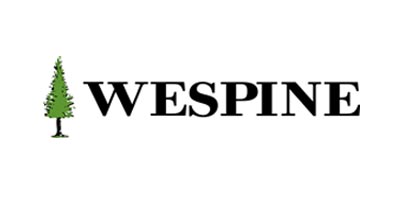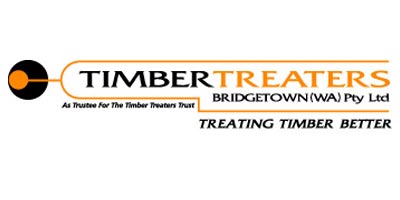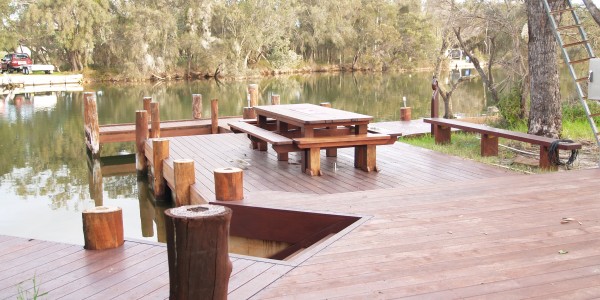Merbau Decking, Hardwood Decking (Kwila Decking)
Merbau decking has an extremely low Tangential Shrinkage Factor compared to other species, 2.5% compared with Jarrah at 7.5%, Spotted Gum 6% and Kapur 6%. This allows the decking boards to be laid relatively close together 2.5- 3.0 mm on a 90 mm board compared with Jarrah which is recommended at 5mm.
It has a Class 1 Durability rating in above ground situations (the highest), it doesn’t twist like some species and has a natural resistance to Termites. It is also a fire rated timber suitable for BAL19 applications.
All decking supplied by us is independently DNA Certified and legally sourced. Our supplier has been working with Greenpeace and the WWF to combat the importation of illegally logged forests.
Merbau (Kwilla) Decking while being one of the most stable and durable timbers on the market has one down fall however, that being the high amount of Tannin present in the Timber, This can cause unsightly staining to white or light coloured surfaces. It is easily addressed by washing the boards with a product called Timbawash before oiling,
It is highly recommended that all surfaces of the board be washed and coated with a good quality Decking oil prior to installation, we recommend the SIKKENS range of Coatings, HLSe in particular, it is available in 10 colour tints to suit your particular Taste. Coating the boards dramatically reduces the chance of cupping and will ensure your deck lasts longer.
Merbau Decking / Timber Uses
- Decking
- Flooring
- Furniture
- Patios
- Chairs
- Tables
- Framing
- Stairs
- Windows
- Roofing
- plus more…
Merbau Timber Sizes
- 90 x 19
- 140 x 19
- Available in set lengths plus more..
Merbau Timber Extras
- Ask us..
Laying Boards Close To The Ground
In exposed situations it is better to stay with the 90mm board, there will be less chance of cupping, it is highly recommended that the boards are sealed underneath due to moisture rising from the ground. In protected areas we have found the wider 140mm boards have been ok however definitely seal the underside of boards and make sure there is airflow under the deck to remove moisture.
Which Side Up Do I Lay My Boards
The most asked question we get, the answer is simple whatever you prefer, there are pros and cons for both surfaces we generally recommend laying smooth side up, this allows re sanding if required down the track, it easier to keep clean and re coat. Also the ribs provide a drainage gap between deck and joist.
Nail Or Screw My Deck Down
Simple answer to this one, Screw. We stock a large variety of screws to suit all budgets, we recommend the Otter range of screws for their high Quality in particular the Chemsheild Cross Point Screws. We have noticed a large amount of decks using stainless screws, Stainless is softer than steel screws and unless you are by the coast these are not necessary, there is several grades of Stainless screws available however the only one that will stand up to the elements in a coastal situation is 316 marine grade. We highly recommend pre drilling using a countersinking drilling tool such as the Macism Clever Tool .
Tannin From The Timber Has Stained My Path
We have found a solution of diluted Napisan or Pool Chlorine will neutralise and remove the discolouration.
How Often Do I Need To Re-Coat My Deck
This totally depends on how exposed your deck is, in full sun and weather and depending on the product used you may expect to have to do twice a year, Under cover in an Alfresco situation depending on the product used it can be as long as every 5 years.
The Sub Floor
This is the most important part of the deck, If using Pine make sure it is Treated to H3 for above ground and H4 for in ground use. Some councils may require H5 Stump and Sole plates. Sub Floor must conform to AS1684.2-1999 PART 2. All fittings must be Galvanised or Stainless if using CCA Treated Timber. If using Galvanised Stirrups it is not advised using Rapid or Quick setting Concrete as the accelerant in the concrete reacts with the Galvanising, use ordinary concrete instead. Take your time and get it right as this is the most important part of your deck.
Other Helpful Hints and Tips When Laying Decking
- Leave a gap between your house and the first board, this will allow you to slide a piece of cardboard or similar in the gap when re oiling so you don’t oil your house.
- Paint the Top of your joists Black or a similar dark colour, when you stand on top of your deck the pine joists will stick out, painted they disappear, this also helps against moisture between your deck and joist.
- String or chalk line your screw lines, make your screws a feature nothing looks worse than a wobbly screw line.
- Allow a week or so for the deck to colour up before putting pot plants and furniture on.
- Don’t over span decking, it is recommended that a .450mm joist centre be used for 19mm decking.
More Information
To read about Merbau and Kwila Timber and its properties: Merbau – Kwila Timber Information
Contact Perth Timber Co for all your Merbau Decking and Merbau Timber requirements.
Merbau Kewdale – Merbau Canning vale – Merbau Malaga – Merbau Kwinana – Merbau Welshpool – Merbau Osborne Park
Our Partners
 |
 |
 |
 |
 |
 |
 |
 |
 |
 |






